Posidonia
Posidònia is entirely realized of ceramic components, and is currently on show at the Joan Miró Museum in Palma de Mallorca, Spain. It is open to the public until June 11th. Posidònia is Mato-Mora’s largest exhibition in her home town.
The piece evokes the city of Palma’s maritime identity, taking the port atmosphere to the interior of the gallery. The exhibition space is explored through a chain made from small ceramic components that inhabit the ceiling, floor and walls. The ceramic elements have been made out of red stoneware clay (stained with oxides); fired in a gas kiln, with a “reduction” firing (without oxygen), to 1280ºC (cone 9). Thanks to this material treatment, the ceramic material recalls the rust that the sea causes on any adjoining materials, particularly metals. The sea, at the same time, is an extremely important element in Majorca’s history.
The intervention Posidònia does not consist of an isolated artistic object, nor a series of them, but rather tries to express the ability with which an artefact allows us to reinterpret the space, offering spectators new ways to inhabit it.
The room it is exhibited in is called “Espai Cúbic” (Cubic Space), due to its proportions. The size of this room is 9.5(W) x 7.8 (L) x 8.4 (H) m. This space has been interpreted as the subaquatic space of a dock. Visitors find themselves submerged in the ceramic choreography, walking on the seabed, where the anchors that secure the boats are resting. They are invited to tie a little nylon string from the ceramic sculptures. This, in turn, creates a natural/manmade line of “tide”, related to the height of the average visitor, and reminiscent of the line where barnacles stop growing on the chains that moor boats to the harbour. The “growth” of this hypersculpture, made of nylon strings, is completely unexpected, and cannot be controlled by the artist. In this way, the ceramic chains are the armature that allows the organic growth to take place.
The artist has been interested in working with submarine growth patterns, such as those of barnacles, muscles and other sea creatures, since 2014. On this occasion, through the element of visitor interaction, she aims to lose control of the end result and understand how the visitor reacts to the piece, not different from how an aquatic creature might react to the chains with which boats are moored. This line of thinking was set up in her Distinction Masters Dissertation, titled A Single Ecstasy. In it, Patricia explores the illusory notion of a division between man and nature; an idea firmly rooted in Eastern philosophy. With Posidònia, Patricia aims to manifest the very same “flow of the universe” that causes submarine invertebrates to inhabit manmade chains in harbours; questioning the very animality of the visitor.
In the installation, the material of ceramics is working entirely in tension, which is a very unique application of this material, commonly found structurally in compression. This has been made possible thanks to the collaboration of Rasti Bartek at Cundall Engineering, and Dr Luc Vandeperre at Imperial College London.
In addition to the installation, the corridor leading to the Espai Cúbic is filled with photographs, drawings and videos explaining the creative process.

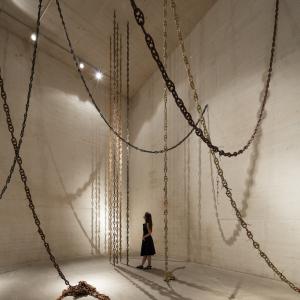

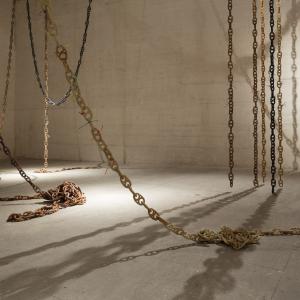
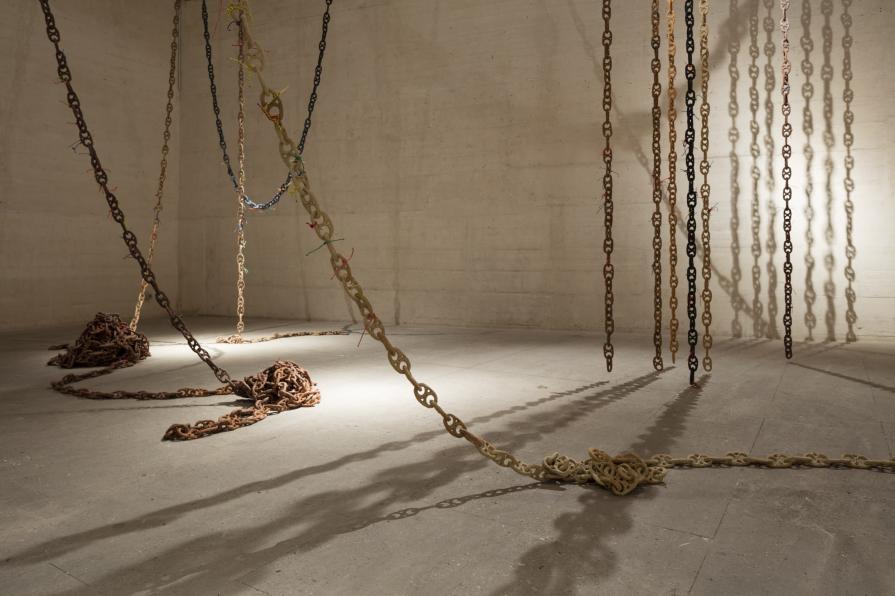
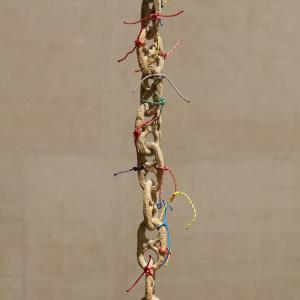
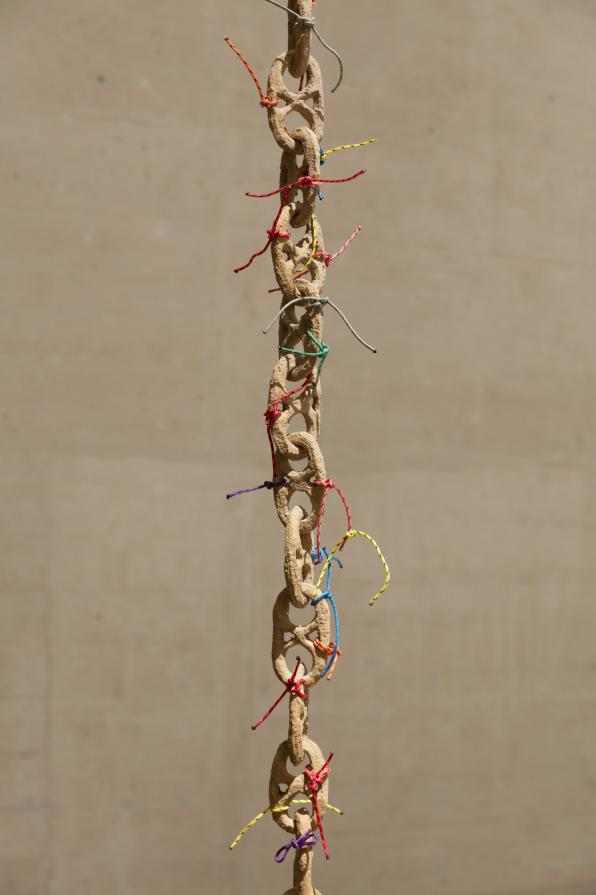

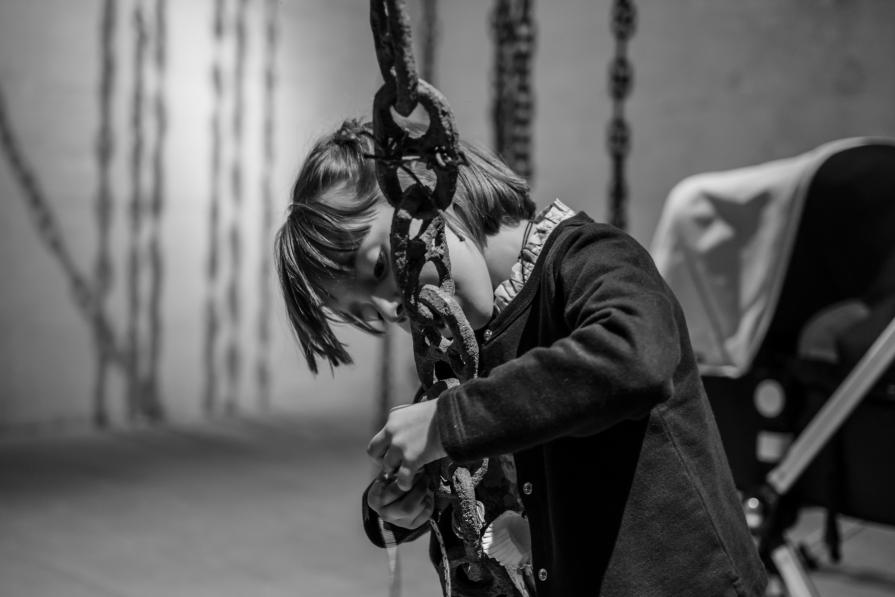

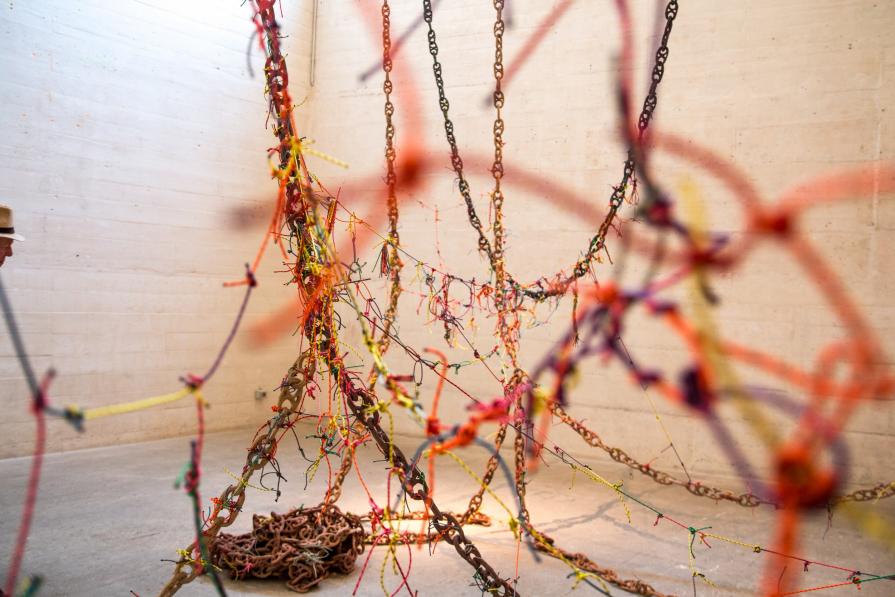

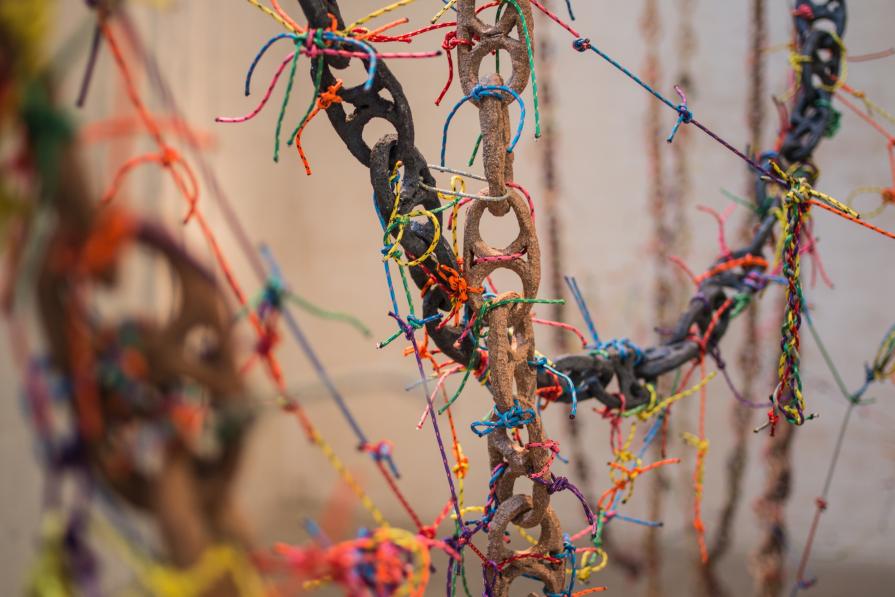
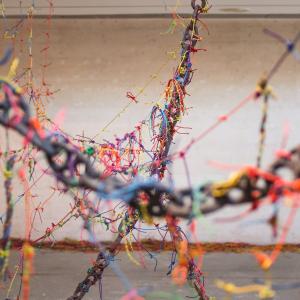

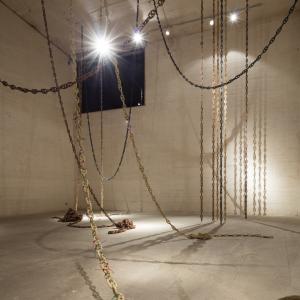
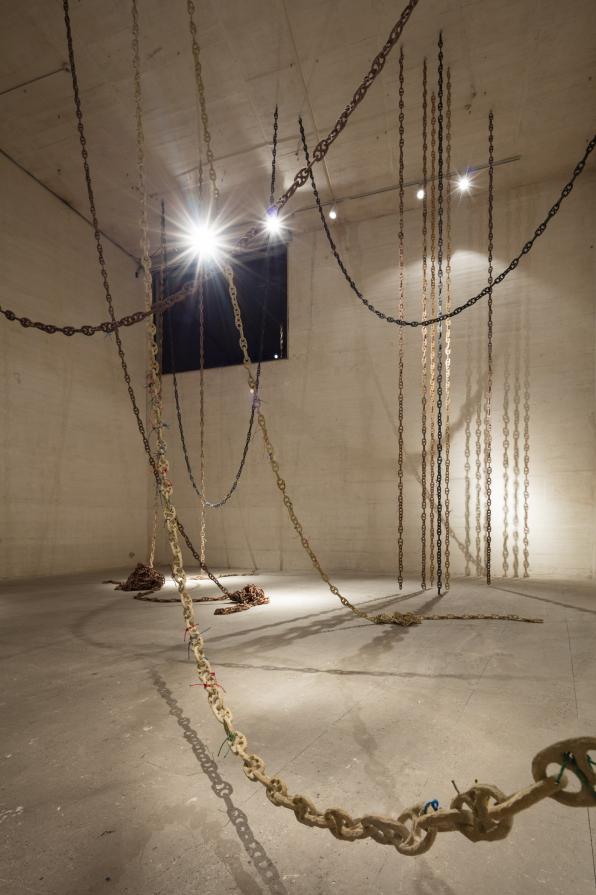
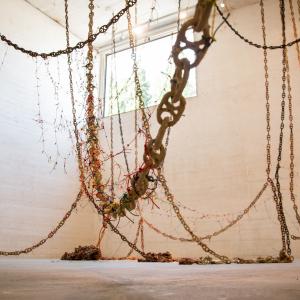























Commenti 0
Inserisci commento